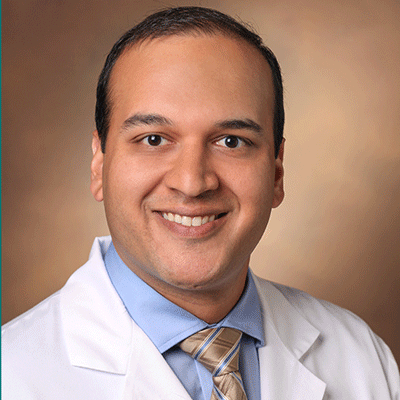This new treatment for GERD — a magnetic device — can offer relief from the discomfort also known as reflux, or heartburn
Gastroesophageal reflux disease, or GERD (also known simply as reflux, or heartburn) is an uncomfortable condition that happens because of a problem where the esophagus meets the stomach. Partially digested food in the stomach backs up into the esophagus, and the stomach acids create a painful burning sensation.
There is a new device and operation that can relieve GERD symptoms for people with chronic reflux. This treatment for GERD is called magnetic esophageal sphincter augmentation, or magnetic sphincter augmentation. It’s a minimally invasive surgery that prevents the contents of the stomach from backing up into the esophagus.
What is GERD?
When you eat, food travels from your mouth down the esophagus. That’s the tube that leads to the stomach. Along the way, food passes through the lower esophageal sphincter. This is a ring of muscle that acts as a one-way valve between the stomach and esophagus. Normally, the sphincter opens when you swallow. It allows food to enter the stomach. Then it closes completely and quickly. When you have GERD, this sphincter doesn’t work well enough to hold food and fluids in the stomach. Food and fluid seep back into the esophagus, causing heartburn and other symptoms.
What is magnetic sphincter augmentation?
Magnetic sphincter augmentation involves placing a device over the lower end of the esophagus, near the sphincter. The device is made up of magnets. Each magnet is covered in titanium and wired together in a ring. The magnets let the ring get bigger or smaller, almost like a rubber band. When you swallow, the pressure increases at the sphincter. The sphincter opens and the ring stretches open to allow food and fluids to get to the stomach. Once the food reaches the stomach, the pressure drops and the sphincter closes. The ring of magnets also closes. This helps keep the sphincter closed and helps prevent the stomach contents from backing into the esophagus.
Why esophageal surgery might be a necessary treatment for GERD
GERD can cause pain, bleeding and trouble swallowing. It can also raise your risk for cancer of the esophagus. If GERD isn’t treated, it can get worse and lead to serious problems. If lifestyle changes (especially changing the foods you eat) and medicines don’t help your symptoms, you may need surgical treatment for GERD. Laparoscopic magnetic esophageal sphincter augmentation is one type of GERD surgery option that may help ease symptoms of reflux.
How magnetic esophageal sphincter augmentation is done
This type of operation uses laparoscopy. That means the surgeon uses a light and camera on the end of a thin tube to see inside the body, and surgical tools are also mounted on thin tubes that can be inserted into the body without a large open incision.
The surgeon uses a thin, lighted tube called a laparoscope (scope). You’ll get general anesthesia, which means you will be in a deep, sleep-like state. This procedure requires small incisions that let the surgeon put the device in place. The magnetic device is sized for you. Some patients stay overnight in the hospital after this procedure; some can go home the same day.

The newest treatment for reflux uses LINX, a ring of magnetic beads, in a minimally invasive surgery. LINX is customized to fit your anatomy and provide you the best possible relief from reflux.


